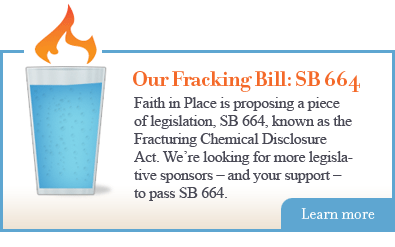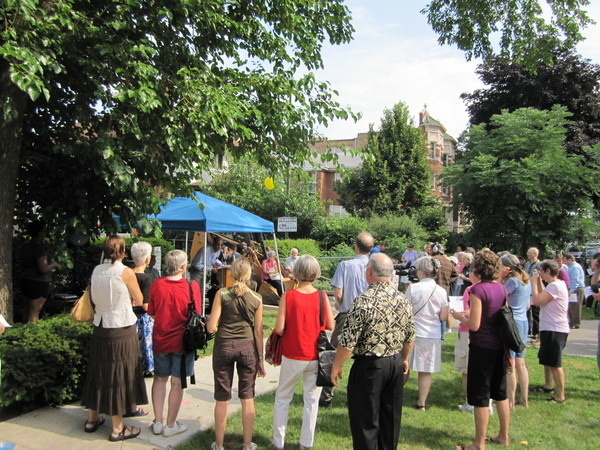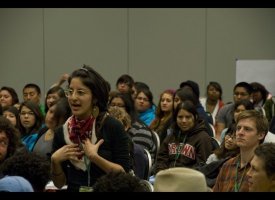 Recently, there has been a good deal of news about “fracking”, a method of producing natural gas. Fracking – short for hydraulic fracturing – is a major reason why natural gas prices and heating bills have been relatively low in recent years. And it seems likely to grow hugely in the near future.
Recently, there has been a good deal of news about “fracking”, a method of producing natural gas. Fracking – short for hydraulic fracturing – is a major reason why natural gas prices and heating bills have been relatively low in recent years. And it seems likely to grow hugely in the near future.
There are some big, obvious advantages to fracking – and on the other hand, some major problems, not all of them so easy to see.
WHAT IS FRACKING?
Fracking is a method of getting natural gas out of underground formations where it is trapped in layers of rock, frequently shale. Water with a mix of various chemicals, some of them toxic, and many of them secret, is injected under high pressure to fracture the rocks and release the natural gas. Then the drillers capture the released gas – as much as they can – and ship it out to burn for electricity or to heat our homes.
There is a lot of gas in shale in our country. In particular, the Marcellus and Utica Shale formations under New York, Pennsylvania, and West Virginia has trillions of cubic feet of natural gas. The US Energy Information Administration has raised its estimate of shale gas available in the US to 347 trillion cubic feet. Pennsylvania had 71,000 wells in 2009, double the number in 2000 and still growing rapidly.
Fracking has moved ahead fastest in the United States, but wells have been drilled in Poland, Tunisia, and the United Kingdom. Major potential shale gas resources have been identified in Africa, Australia, China, India, Europe, and South America. Shale gas looks like it will be a big part of the world's energy picture.
Fracking has brought down the price of natural gas, which helps keep heating bills down. And it makes natural gas competitive with coal in power plants, especially as some new pollution rules are imposed which make coal more costly. And when it is burned, natural gas produces roughly half the greenhouse gas emissions for the same amount of energy, compared to coal.
Natural gas can also go into vehicles. Oak Park has a fleet of village vehicles that run on compressed natural gas. It burns cleaner in terms of air pollution, and sends less carbon dioxide out the tailpipe than gasoline. It is also cheaper than gasoline. And natural gas can be produced in very large quantity here in the United States, a big consideration for those concerned with issues like energy security and the trade deficit.
It is not hard to see why some people have advocated using natural gas as a “bridge fuel” during the transition to sustainable energy like wind, solar, and geothermal. Does the “Pickens Plan” sound familiar?
WHAT ARE THE PROBLEMS?
Unfortunately, there are some very serious problems with fracking. Four of them have come to light more or less in this order: air pollution, flammable tap water, contamination of drinking water with radiation, toxic chemical spills. A fifth one is still controversial: one recent study suggests that, when the production process is included, natural gas from fracking may be just as dirty as coal as far as global warming is concerned.
Air pollution: Where there are many fracking wells, there is pollution and smog. The state of Wyoming recently failed to meet air quality standards for the first time, largely because of fracking. In Soublette County, air quality resembled that in Houston and Los Angeles. In some areas of Texas, asthma rates close to fracking wells are more than triple those in other parts of the state.
Flammable tap water: In some cases, natural gas released by fracking, not captured by the drilling company, has migrated into water supplies. In the some cases, captured in the film Gasland (showing at the Oak Park Public Library on August 28th - see Events calendar), the water coming out of a tap can catch fire. In a few cases houses have blown up from the accumulation of methane not captured by the drillers in basements or tap water.
Radioactive water: After water is used in fracking it must be disposed of. In Pennsylvania, millions of gallons have been dumped into rivers from which drinking water is drawn farther downstream. This water is often very radioactive, either from the original chemicals used, or from radioactive elements it encounters while underground. Recent measurements seem to show that the radioactivity is often too high to be diluted by the rivers, and that treatment plants are not equipped to measure or abate it.
Toxic spills: This April a fracking drill in northern Pennsylvania blew up, sending thousands of gallons of water contaminated with toxic chemicals into a creek that flows into the Susquehanna River. Part of the toxic chemical threat is that drilling companies have not been required to disclose what chemicals they use. They got an exemption in 2005 from the Safe Drinking Water Act.
In spite of all these serious problems, a few months ago I summed up hyraulic fracking more or less this way: with lower prices, the dirty (natural gas) is the enemy of the filthy (coal), but it is also undercutting the clean (wind and solar). But now:
Greenhouse gases: In the process of drilling, some natural gas escapes the drillers' pipes. As we have seen, some gets in the drinking water, or it can accumulate in a basement. But some escapes to the air. Natural gas is mostly methane, which is an extremely potent greenhouse gas, causing 20 times the global warming compared to the same volume of carbon dioxide. A recent study from Cornell University estimated that up to 7.9% of the natural gas released escapes into the atmosphere. That makes a big difference. This study concludes that, when the whole process is looked at, fracking and burning natural gas produces as much global warming as coal. This is not a settled question. For more on this ongoing discussion check out "Is Natural Gas Cleaner than Coal" at climateprogress.org. But certainly the final answer will be that natural gas from fracking is not as clean as we had hoped.
THE BOTTOM LINE:
I always start from global warming, which to me is the overriding issue. From the point of view of global warming, gas from fracking may be a little better than coal, but nothing to get excited about. Replacing gasoline with CNG may actually be a step backward, since oil is not as dirty as coal. (Natural gas still emits less when burned – but remember the escaping methane.)
When we look at other forms of pollution, fracking is definitely bad but coal is worse. And there are ways to make fracking much cleaner. There are technologies to greatly clean up both the water and the airborne emissions. Coal ravages the environment and kills thousands of people from its use – and seems to have far less prospect of improvement. So with a good stiff dose of regulation, I guess shale gas is an improvement over coal.

My bottom line is: put a price on greenhouse gas emissions. Charge for CO2. That will make coal, oil, and natural gas more expensive, as they should be, and will push forward the rapid development of truly clean sources of energy, mainly wind, solar, and geothermal. And don't regard natural gas in any form as a real bridge fuel. It does very little to reduce global warming compared to other fossil fuels, and to believe that it does is a dangerous distraction. -- by Doug Burke, Oak Park
p.s: WHAT ABOUT FRACKING IN ILLINOIS?:
Right now there is no fracking going on in Illinois. There is shale gas, but not as rich as the deposits being tapped in other states. In order to be proactive on this issue Faith In Place helped prepare and support a bill to regulate fracking if the practice comes here. SB 664 would required companies to disclose what's in fracking solutions; the use of some toxic chemicals would be limited; and reporting on the use and disposal of fracking solutions would be required. The bill passed the State Senate but was not called to a vote in the State House of Representatives, where it is widely supported. Advocates hope to pass it in the fall veto session. The Illinois bill was used as a model for a Texas law that passed on May 26th, which requires disclosure there. Texas is a major fracking state. Faith In Place emphasizes that the ultimate goal is renewable energy, not just “cleaner” fossil fuels.
 Over 75 turned out Thursday (July 28, 4 PM) for the groundbreaking at Euclid Avenue United Methodist Church to launch it's installation of geothermal heating and cooling system for it's facility located at Euclid & Washington Avenues in Oak Park. The eco-friendly geothermal system will replace its aging boiler heating system and expand cooling to the entire building. The loop field for the geothermal system will be installed under the church's parking lot. The current asphalt surface of the parking lot will then be replaced with permeable pavers.
Over the last year research and planning for this project proceeded with the help and support of Faith in Place, Interfaith Power & Light’s Cool Calculator Program, the congregation’s Green Action Task Force. In opening remarks at the groundbreaking, Pastor Marti Scott said God smiles on those working to save the planet and surely God is smiling on this place today. David Pope indicated that this church serves as an example for all the community.
Over 75 turned out Thursday (July 28, 4 PM) for the groundbreaking at Euclid Avenue United Methodist Church to launch it's installation of geothermal heating and cooling system for it's facility located at Euclid & Washington Avenues in Oak Park. The eco-friendly geothermal system will replace its aging boiler heating system and expand cooling to the entire building. The loop field for the geothermal system will be installed under the church's parking lot. The current asphalt surface of the parking lot will then be replaced with permeable pavers.
Over the last year research and planning for this project proceeded with the help and support of Faith in Place, Interfaith Power & Light’s Cool Calculator Program, the congregation’s Green Action Task Force. In opening remarks at the groundbreaking, Pastor Marti Scott said God smiles on those working to save the planet and surely God is smiling on this place today. David Pope indicated that this church serves as an example for all the community.







